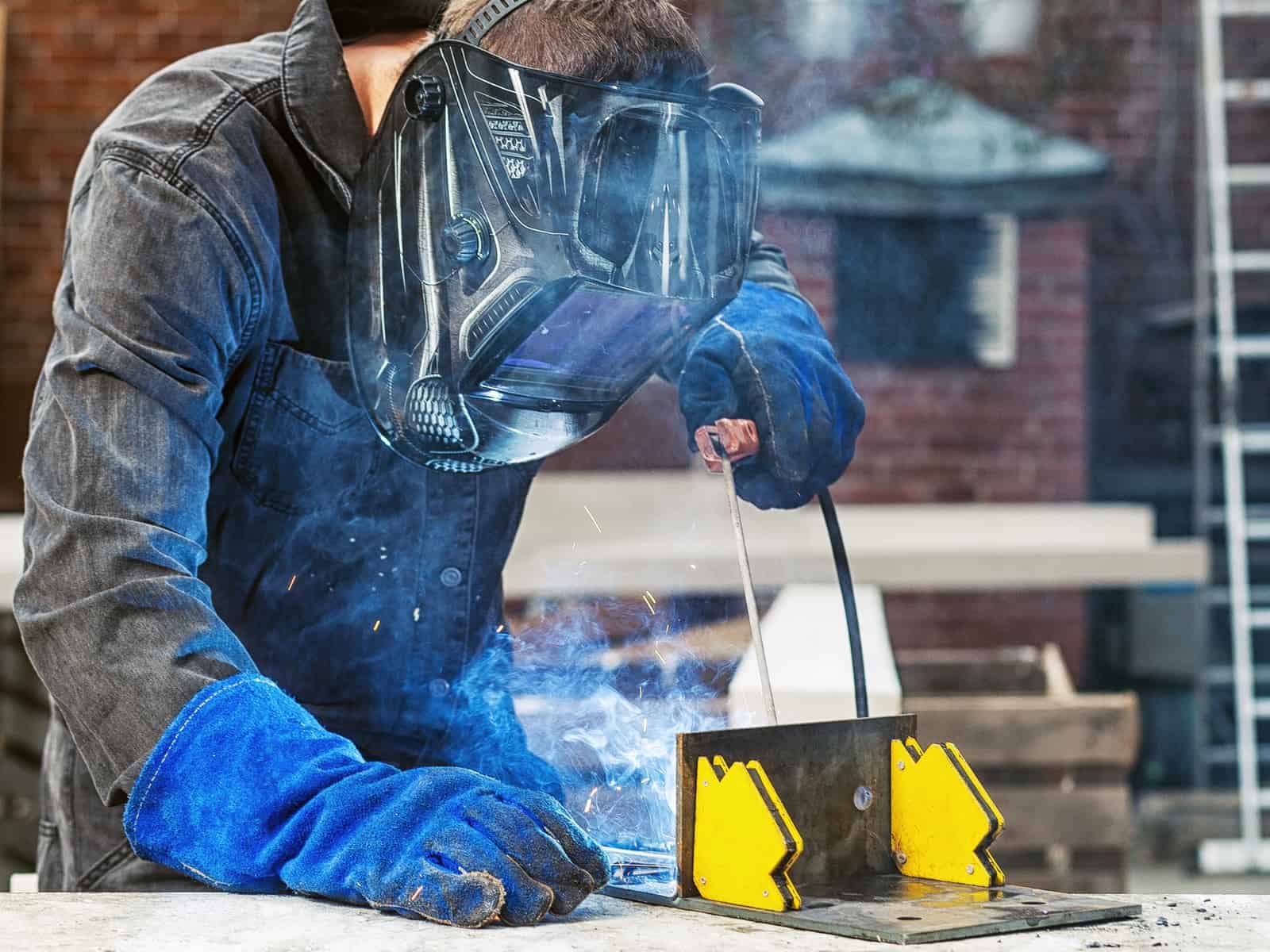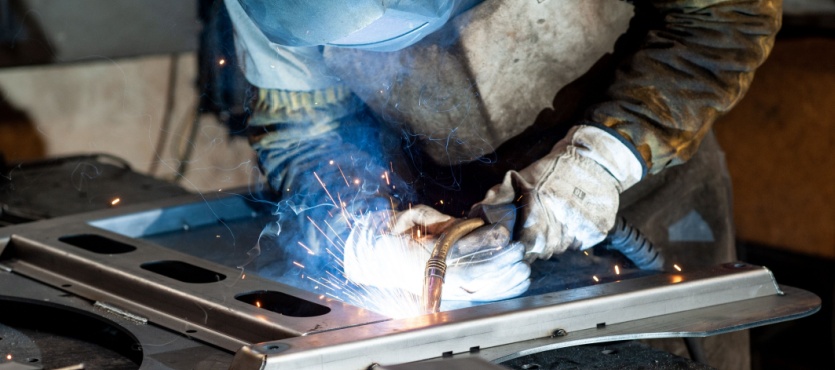Common Welding Fixing Issues and Just How to Address Them Effectively
Welding repair work typically come across a variety of concerns that can jeopardize the stability of the end product. Usual troubles include insufficient infiltration, porosity, and misalignment, amongst others. Each issue offers distinct obstacles that need specific techniques for resolution. Understanding these concerns is important for welders aiming to improve their abilities and end results. This conversation will discover these common welding repair problems and effective techniques to resolve them.
Insufficient Penetration
Poor infiltration happens when the weld steel stops working to fully fuse with the base material, causing weak joints and prospective architectural failings. This issue often stems from insufficient heat input, incorrect electrode angle, or incorrect welding rate. Welders may encounter poor infiltration due to a miscalculation of the needed parameters for a particular material thickness or kind. Furthermore, contamination on the base material's surface can hinder efficient bonding, worsening the problem. To resolve inadequate penetration, welders need to guarantee suitable setups on their devices and preserve a clean work surface area. Regular evaluation of welds is advised to recognize any shortages early, permitting timely modifications and the avoidance of jeopardized architectural integrity in bonded settings up.
Porosity
Porosity is an usual flaw in bonded joints that shows up as tiny gas bubbles entraped within the weld steel. This issue can endanger the stability of the weld, bring about decreased strength and prospective failure under stress. Montana Mobile Welding and Repair Welding. Porosity normally emerges from contamination, dampness, or inappropriate welding methods, which allow gases to run away right into the molten weld swimming pool. To deal with porosity, welders should ensure appropriate surface prep work, keep a tidy workplace, and make use of appropriate welding parameters. Furthermore, picking the best filler material and shielding gas can reduce gas entrapment. Normal inspection and testing of welds can help determine porosity early, guaranteeing prompt restorative actions are taken, consequently protecting the quality and integrity of the bonded structure
Imbalance
Misalignment in welding can occur from numerous factors, including improper configuration and thermal growth. Comprehending the origin creates is necessary for effective resolution. A number of modification techniques are offered to straighten components and assure structural stability.
Root causes of Imbalance
Welding imbalance often originates from a range of underlying problems that can compromise architectural stability. One primary cause is inappropriate fit-up of components prior to welding, which can bring about voids and irregular surface areas. Variants in thermal expansion during the welding procedure can also result in distortion, specifically if the materials being signed up with have different coefficients of growth. In addition, poor fixturing and clamping might fail to hold elements securely in area, leading to movement during welding. Improperly conserved devices, including welding machines and tools, may introduce incongruities in the weld grain, additional contributing to misalignment. Lastly, driver error, originating from not enough training or experience, can also play a substantial function in creating misaligned welds.
Correction Methods Readily Available
Resolving imbalance effectively requires a mix of restorative techniques customized to the particular concerns handy. One common technique is using fixtures or jigs to hold parts in the proper setting throughout welding, making sure consistent alignment. Additionally, pre-heating the materials can aid lower distortion and improve fit-up. For significant imbalance, mechanical realignment methods, such as utilizing hydraulic jacks or clamps, can be employed to remedy the placement before welding. Post-weld warm therapy may also be essential to relieve tensions brought on by misalignment. Careful evaluation and modification throughout the setup phase can protect against misalignment concerns from becoming significant problems, advertising a smoother welding procedure and improving overall architectural stability.
Distortion
Distortion is an usual difficulty in welding that can emerge from different variables, consisting of unequal cooling and heating. Comprehending the reasons of distortion is essential for carrying out reliable avoidance strategies. Resolving this issue not only boosts structural stability however also enhances the total quality of the weld.
Reasons of Distortion
When subjected to the extreme heat of welding, materials frequently go through modifications that can cause distortion. This sensation mainly emerges from thermal growth and contraction during the welding procedure. As the weld area warms up, the material increases; upon cooling, it gets, which can develop inner stress and anxieties. Furthermore, irregular home heating across a workpiece can intensify these stress and anxieties, leading to warping or flexing. The type of product also plays a substantial role; metals with varying thermal conductivity and coefficients of development may respond in different ways, resulting in uncertain distortions. Poor joint design and insufficient fixturing can add to misalignment during welding, enhancing the probability of distortion. Recognizing these causes is important for effective welding fixing and avoidance approaches.
Prevention Techniques
Reliable prevention techniques for distortion during welding concentrate on managing heat input and making sure appropriate joint style. Keeping a regular heat input aids to reduce thermal expansion and contraction, which can bring about distortion. Making use of methods such as pre-heating the work surface can likewise decrease the temperature slope, promoting uniform home heating. In addition, picking ideal joint styles, such as T-joints or lap joints, can enhance stability and minimize anxiety focus. Carrying out appropriate fixturing to safeguard the work surfaces in position additionally help in preserving alignment throughout the welding procedure. Lastly, staggered welding series can distribute warmth extra uniformly, preventing localized distortion. By using these approaches, welders can greatly reduce the likelihood of distortion and boost the overall top quality of their welds.
Breaking
Fracturing is a common issue experienced in welding fixings, commonly arising from various variables such as improper air conditioning prices, product choice, or insufficient joint prep work. The event of splits can greatly endanger the stability of the weld, bring about prospective failings throughout procedure. To address this issue, welders need to first examine the source, ensuring that materials work and properly selected for the particular application. In addition, controlling the air conditioning rate throughout the welding process is crucial; rapid air conditioning can induce anxiety and cause fracturing. Correct joint layout and prep work also add to lessening the danger. Carrying out these techniques can enhance weld top quality and resilience, eventually decreasing the likelihood of fracturing in finished weldments.

Insufficient Blend
A significant issue in welding repair work is incomplete fusion, which happens usa weld when the weld metal does not appropriately bond with the base material or previous weld passes - Montana Mobile Welding and Repair Belgrade Welding. This flaw can bring about weaknesses in the joint, possibly jeopardizing the integrity of the welded framework. Factors contributing to incomplete combination include insufficient heat input, inappropriate welding strategy, and contamination of the surfaces being joined. To address this concern successfully, welders need to guarantee proper pre-weld cleansing and surface prep work, in addition to adjust their welding criteria to accomplish adequate infiltration and fusion. Normal inspection during the welding process can additionally help recognize insufficient fusion you could check here early, enabling timely restorative procedures to improve the total quality of the weld
Overheating
While welding fixings can enhance architectural honesty, overheating provides a significant obstacle that can bring about product deterioration. Extreme warmth throughout welding can modify the mechanical residential or commercial properties of metals, resulting in minimized strength, raised brittleness, and bending. This sensation is specifically important in high-stress applications where structural reliability is vital. Identifying overheating can involve visual inspections for staining or distortion, as well as keeping track of temperature during the welding procedure. To reduce the risks related to overheating, welders need to use appropriate methods, such as controlling heat input, changing travel speed, and utilizing ideal filler materials. Furthermore, carrying out pre- and post-weld heat treatments can assist bring back material residential properties and enhance the total quality of the fixing, making sure long-term efficiency and safety.
Frequently Asked Concerns
What Are the Common Indicators of a Welding Issue?

Just How Can I Check My Welds for Quality?
To test welds for top quality, one can utilize aesthetic inspections, ultrasonic testing, and radiographic techniques. Each visit this site right here strategy assures structural stability, identifies issues, and validates adherence to specified criteria, eventually boosting the reliability of the bonded joints.
What Security Precautions Should I Take While Welding?
When welding, one ought to prioritize safety and security by using proper personal safety tools, guaranteeing proper air flow, safeguarding combustible materials away, maintaining a clean office, and understanding surroundings to avoid injuries and crashes.
Can I Repair a Weld Without Renovating the Entire Joint?
Repairing a weld without redoing the entire joint is feasible, depending on the damages (Montana Mobile Welding and Repair Belgrade Welding). Methods such as grinding, including filler material, or making use of a welding procedure can properly attend to specific defects while maintaining the surrounding structure
What Tools Are Essential for Reliable Welding Repair Works?
Essential tools for reliable welding fixings include a welding equipment, cord brush, grinder, safety gear, clamps, and filler products. Each device plays a crucial function in ensuring quality and security throughout the repair process. Porosity commonly occurs from contamination, wetness, or improper welding methods, which allow gases to escape into the molten weld pool. Poorly maintained tools, consisting of welding machines and tools, might introduce incongruities in the weld bead, more contributing to misalignment. When subjected to the intense warmth of welding, products usually go through changes that can lead to distortion. Cracking is an usual problem encountered in welding repairs, often resulting from various elements such as improper cooling rates, product selection, or poor joint prep work. A substantial concern in welding repair work is incomplete fusion, which takes place when the weld steel does not sufficiently bond with the base product or previous weld passes.